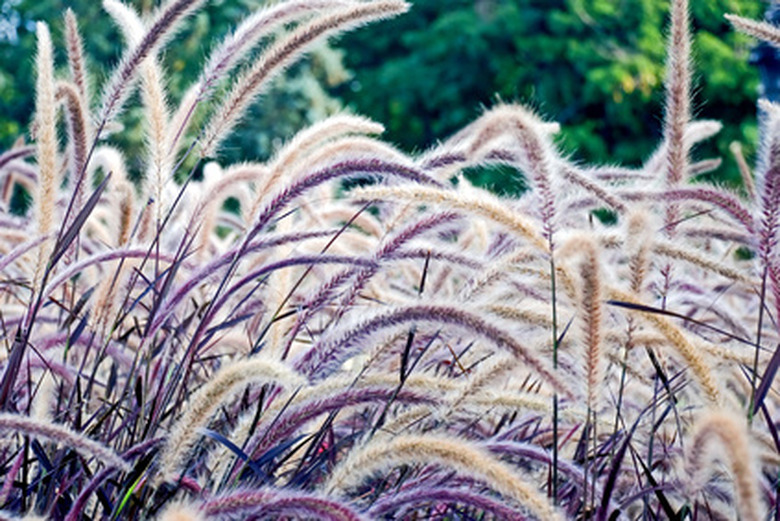Types Of Swamp Grass
Swamp grass is a general term that includes many plants that are often grown as ornamentals. They don't require a swamp in which to grow—many do fine in moist soil. Species occur in moist habitats around the world. It's wise to choose a swamp grass that is native to your area to prevent the spread of an invasive plant, such as West Indian marsh grass, which has become a problem in Australia.
Panicum Grass
Also called "switch grass," this swamp grass is popular as a background plant in perennial gardens. It also forms a tall screen, up to 5 feet high, that you can use in place of a fence for privacy or to separate garden areas. It's a native plant in areas such as eastern Canada, the central and eastern United States and as far south as Central America. It provides food and cover for many types of wildlife, including quails, which forage among it in fall. Plant panicum grass in an area that gets full sun and has damp, fertile soil.
- Swamp grass is a general term that includes many plants that are often grown as ornamentals.
- It also forms a tall screen, up to 5 feet high, that you can use in place of a fence for privacy or to separate garden areas.
Wildrye Grasses
Blue wildrye and creeping wildrye are low-growing bunchgrasses in the Elymus genus that grow in moist areas, such as creek beds. They both have deep root systems that make the plant drought tolerant and can help to prevent erosion. Virginia wildrye is a swamp grass that occurs in many states outside of Virginia. It grows to nearly 4 feet tall and produces yellow flowers in spring. In its native habitat, Virginia wildrye occurs along shady riverbanks, in open woodlands and in fence rows. It provides seed, grazing and forage materials for wildlife such as small mammals and birds, and also attracts butterflies, making it a good choice for natural-looking garden areas.
Sedge Grasses
Many gardeners choose one of these perennial evergreen swamp grasses as ornamentals that add color and movement to the area where they're planted. Many different species of sedges exist around the world, and although they are not true grasses, they require many of the same conditions other grasses prefer. The sedges prefer temperate and colder regions and perform best when grown in partial shade or full sun. Most species need moist soil that is well drained and fertile. One popular species is Bowles' golden sedge, which grows to only 16 inches and sports yellow-gold leaves. It develops small clumps of tiny brown flowers from spring through summer.
- Blue wildrye and creeping wildrye are low-growing bunchgrasses in the Elymus genus that grow in moist areas, such as creek beds.
- The sedges prefer temperate and colder regions and perform best when grown in partial shade or full sun.
